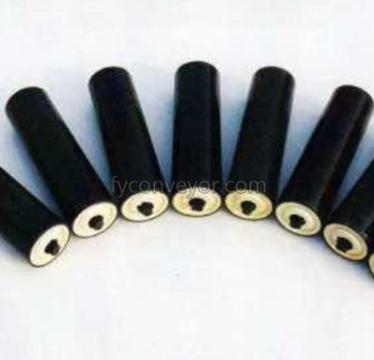What is a Rubber Roller Used For?
Rubber rollers may not be the most glamorous of industrial components, but they play a vital role in numerous applications across a wide range of industries. Often made from high-quality rubber or elastomer materials, these unassuming cylindrical objects are known for their versatility and reliability. One of the basic applications of rubber rollers is in conveyor systems, where they are used to facilitate the movement of goods and materials. In this article, we will explore the world of rubber rollers, focusing on their uses and significance, specifically conveyor rubber rollers.
The Basics of Rubber Rollers
Before delving into their specific applications, it is necessary to understand the basics of rubber rollers. These rollers are cylindrical devices made primarily of rubber or elastomeric materials. The choice of rubber material depends on the intended application and specific requirements such as durability, chemical resistance, and temperature resistance.
Rubber rollers come in a variety of sizes, from small rollers used in printers and copiers to large rollers used in industrial machinery. The core purpose of rubber rollers is to facilitate the movement or transfer of objects, materials or substances. They can rotate freely or be powered by an external device, such as an electric motor, to move items along a predetermined path. Rubber surfaces provide essential properties such as traction, cushioning and grip, making them indispensable in many industries.
Wide range of applications for rubber rollers
Rubber rollers are widely used in various industries due to their versatility and reliability. Here are some of the common uses of rubber rollers
Printing industry: Rubber rollers are an integral part of the printing press, helping to feed the paper and control ink distribution. Whether it is offset, gravure or flexo printing, these rollers ensure consistent and precise printing results.
Textile Industry: In textile manufacturing, rubber rollers are used in processes such as dyeing, printing and fabric finishing. They help to apply dyes and other chemicals uniformly to the surface of the fabric.
Paper industry: Rubber rolls are used in paper mills and printing presses for handling and transporting paper rolls. They provide the necessary grip and pressure to prevent slippage and ensure smooth paper processing.
Conveyor systems: Conveyor rubber rollers are a key component of conveyor systems and are used in a wide range of manufacturing, distribution and logistics applications. These rollers support the movement of materials, products and packaging along a production line or from one location to another.
Conveyor rubber rollers: the backbone of material handling
Conveyor systems are the workhorses of modern industry. They are responsible for the efficient flow of goods in manufacturing plants, distribution centres, airports and various other facilities. Conveyor rubber rollers play a key role in these systems, making them critical components in the material handling process.
1. Load distribution and support
Conveyor rubber rollers act as load-bearing components, providing support and stability to the items being transported. They are strategically positioned along the conveyor belt to evenly distribute the weight of the material being transported. This not only prevents damage to the items, but also ensures a smooth flow of goods through the system.
2. Traction and grip
Rubber is known for its excellent traction properties. Conveyor rubber rollers utilise this property to firmly grip the items being conveyed. Whether it's heavy machinery parts or fragile packaging, these rollers help prevent slippage and ensure that items arrive at their destination intact.
3. Noise and vibration suppression
Conveyor systems generate significant noise and vibration due to the continuous movement of materials. Rubber rollers act as effective shock absorbers, absorbing vibrations and reducing noise levels in the workplace. This helps to create a quieter and more comfortable working environment.
4. Durability and longevity
Conveyor rubber rollers are designed to withstand the harsh conditions of industrial operations. They are made of high quality rubber compounds with excellent abrasion, wear and chemical resistance. This durability ensures a longer service life and minimises maintenance and replacement costs.
5. Versatile configurations
Conveyor rubber rollers are available in a variety of configurations to suit different conveyor system designs and applications. They can be grooved, crowned or coated with special materials to meet specific needs. For example, grooved rollers are used to facilitate the movement of curved or inclined conveyors, while crowned rollers help maintain proper conveyor tracking.
6. Sanitary and food-grade options
In industries such as food processing and pharmaceuticals, conveyor systems often require components that meet stringent health and safety standards. Conveyor rubber rollers are available in food-grade and sanitary versions to ensure compliance with industry regulations.
Conclusion
Rubber rollers may not always get the limelight, but they are undoubtedly indispensable in a variety of industries, with conveyor rubber rollers playing a vital role in material handling and logistics. These unassuming cylindrical components provide the necessary support, traction, and durability required for efficient conveyor systems. Whether they're moving products on a factory assembly line or transporting luggage at an airport, conveyor rubber rollers quietly and efficiently keep industrial wheels turning.



